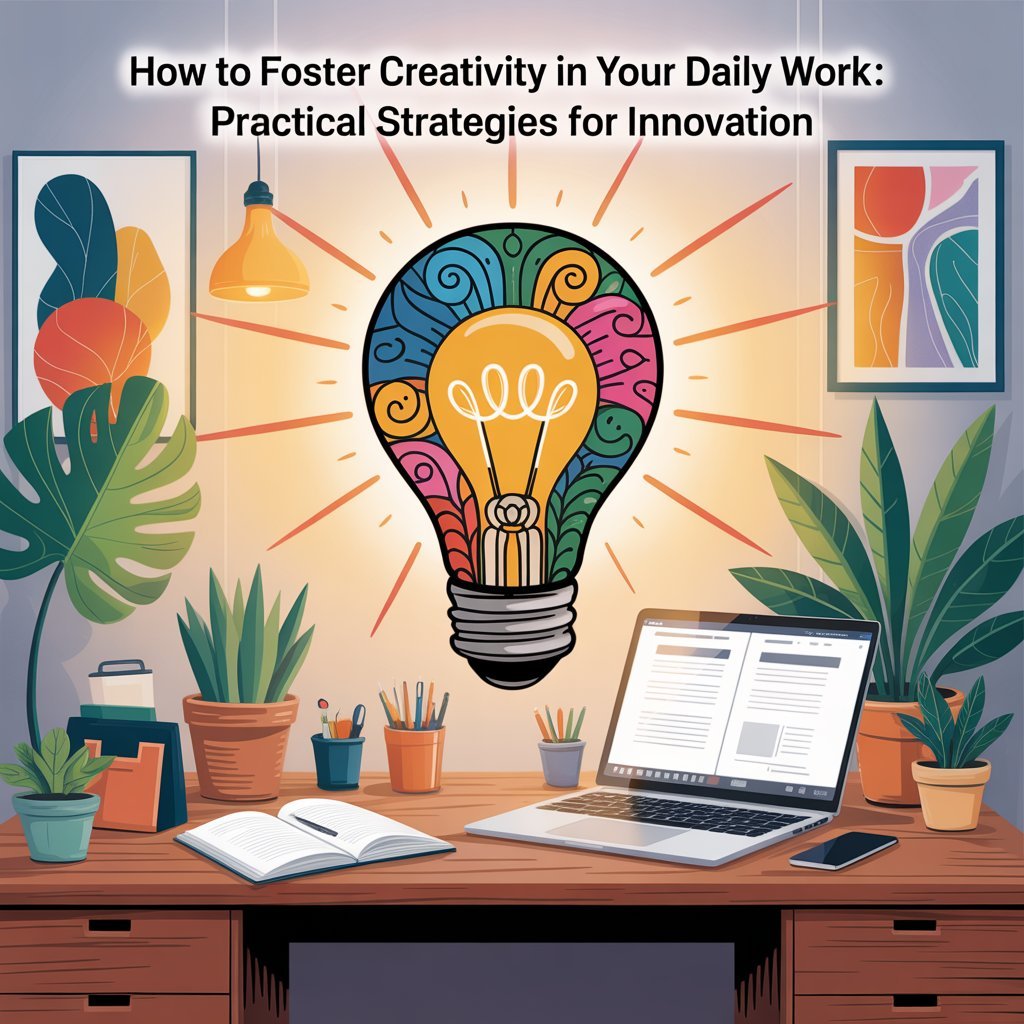1. Introduction: Creativity Isn’t Just for “Creatives”
Think creativity is reserved for artists, writers, or designers? Think again. A study by IBM found that 60% of CEOs rank creativity as the most important leadership skill above rigor or management discipline.
Yet, many of us dismiss our creative potential, blaming burnout, routine, or the myth that creativity is an innate “gift.” The truth? Creativity is a muscle—one that thrives with the right habits, environment, and mindset.
In this guide, you’ll learn how to:
- Rework mundane tasks into opportunities for innovation.
- Hack your environment to spark ideas effortlessly.
- Collaborate in ways that amplify (rather than stifle) originality.
Let’s dive in.
2. What Creativity Really Means (And Why It’s Not About “Eureka” Moments)
Creativity isn’t about waiting for divine inspiration—it’s problem-solving with a twist. Psychologists define it as:
“The ability to produce work that is both novel (original) and appropriate (useful).“
The Two Keys to Unlocking It:
- Divergent Thinking: Generating many ideas (e.g., brainstorming).
- Convergent Thinking: Refining the best ones (e.g., critiquing).
Surprise Insight: Routine isn’t the enemy. A 2012 study in the Creativity Research Journal found that rituals (like a fixed work start time) actually free mental energy for creative work.
3. Daily Habits to Train Your Creative Brain
A. The “Morning Dump” Journaling
- What to do: Spend 5 minutes free-writing whatever comes to mind—no editing.
- Why it works: Dumping thoughts clears mental clutter, a tactic Julia Cameron champions in The Artist’s Way.
B. Capture Ideas Like a Detective
- Tool: Use a notes app (Obsidian, Notion) or pocket notebook.
- Pro Tip: Label ideas as “Action,” “Incubate,” or “Trash” to avoid overwhelm.
C. Take “Thinking Walks”
- Stanford research: Walking boosts creative output by up to 60%.
- Try this: Stroll without headphones; let your mind wander.
D. Cross-Pollinate Interests
- Example: A programmer studying pottery might see parallels in iterative design.
- Action: Dedicate 30 mins/week to learning something unrelated (e.g., a podcast on architecture).
4. Design Your Workspace for “Flow”
A. Controlled Chaos
- Science: A Psychological Science study found moderate clutter fosters creativity—but filth kills it.
- Sweet Spot: Keep your desk 70% tidy, with space for spontaneous sketches or notes.
B. Stimuli That Trigger Ideas
- Visual: Pin up abstract art or a “random inspiration board” (e.g., magazine clippings).
- Auditory: Ambient noise (coffee shop sounds) or instrumental music enhances focus, per Journal of Consumer Research.
C. The 20% Rule (Stolen from Google)
- How it works: Spend 20% of work time on passion projects (e.g., Gmail was a 20% project).
- Adapted version: Block 1-2 hours weekly for experimentation.
5. Collaborate Without Killing Ideas
A. The “Yes, And…” Rule
- From improv comedy: Build on others’ ideas instead of shutting them down.
- Bad: “That’ll never work.”
- Good: “Yes, and we could also try X.”
B. Seek “Vuja Dé” Moments
- Definition: Seeing familiar things with fresh eyes (opposite of déjà vu).
- How: Invite an outsider (e.g., a marketer to a product meeting) to challenge assumptions.
C. Feedback That Fuels Innovation
- Avoid: “I don’t like it.”
- Use: “What if we tested this part differently?”
6. Breaking Through Creative Blocks
A. Reframe Failure as “Data”
- Example: Post-it notes were a failed adhesive experiment.
- Mantra: “This didn’t work—what does it teach me?”
B. Add Constraints
- Try: “Solve this problem with only $10” or “Explain it to a 5-year-old.”
- Why it works: Limits force unconventional thinking (Twitter’s 280 chars).
C. Walk Away (Seriously)
- Insight: Incubation periods let the subconscious work.
- Action: Sleep on a problem or take a shower (Archimedes’ “Eureka” moment happened in a bath).
7. Tools to Automate Creativity
- Mind-Mapping: Miro (collaborative), XMind (structured).
- Random Prompt Generators: Oblique Strategies cards or ChatGPT (“Give me 10 weird ideas for X”).
- Books: Steal Like an Artist (Austin Kleon), Creative Confidence (IDEO founders).
8. Conclusion: Start Small, Think Wild
Creativity isn’t a lightning strike—it’s a campfire you keep alive daily. Try one tip today:
- Take a walk without your phone.
- Spend 5 minutes doodling before a meeting.
- Ask a colleague, “What’s the weirdest solution you can imagine?”
Which strategy will you test first?





